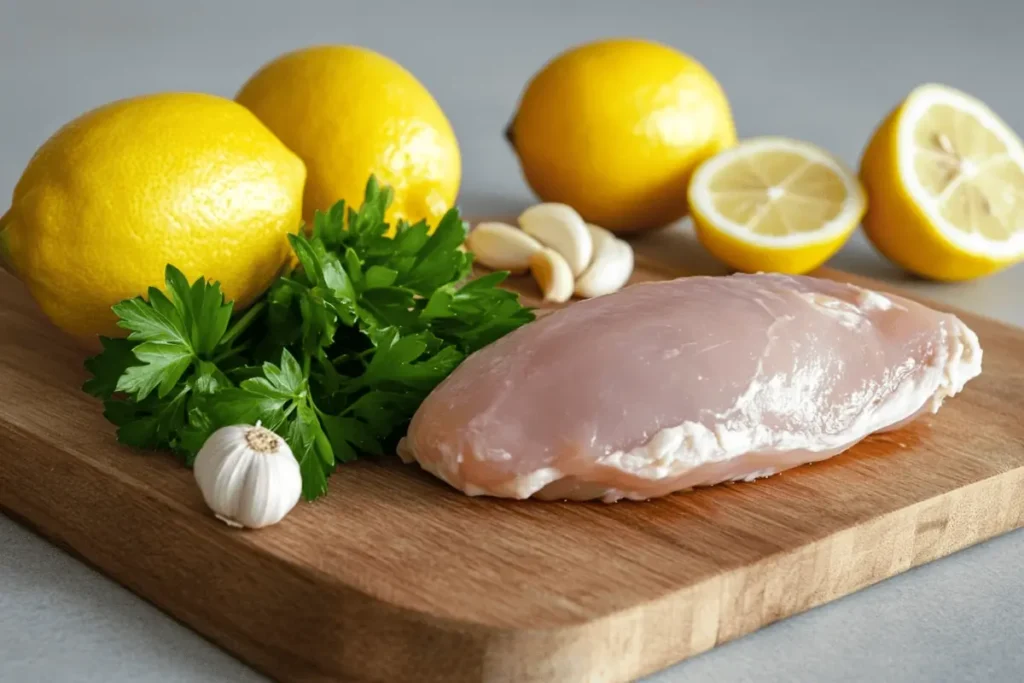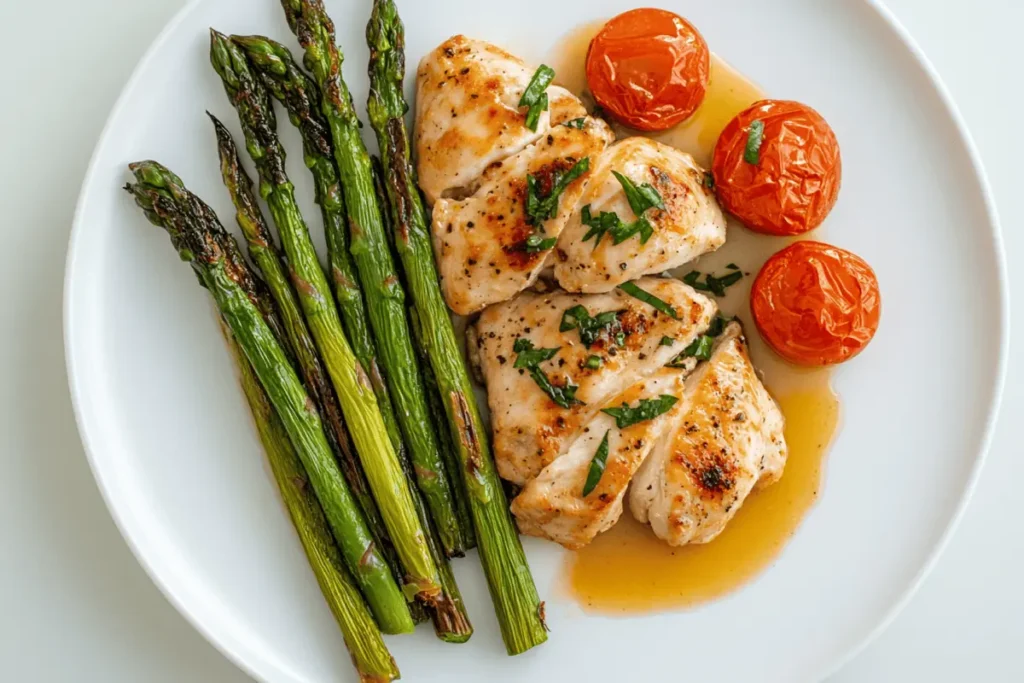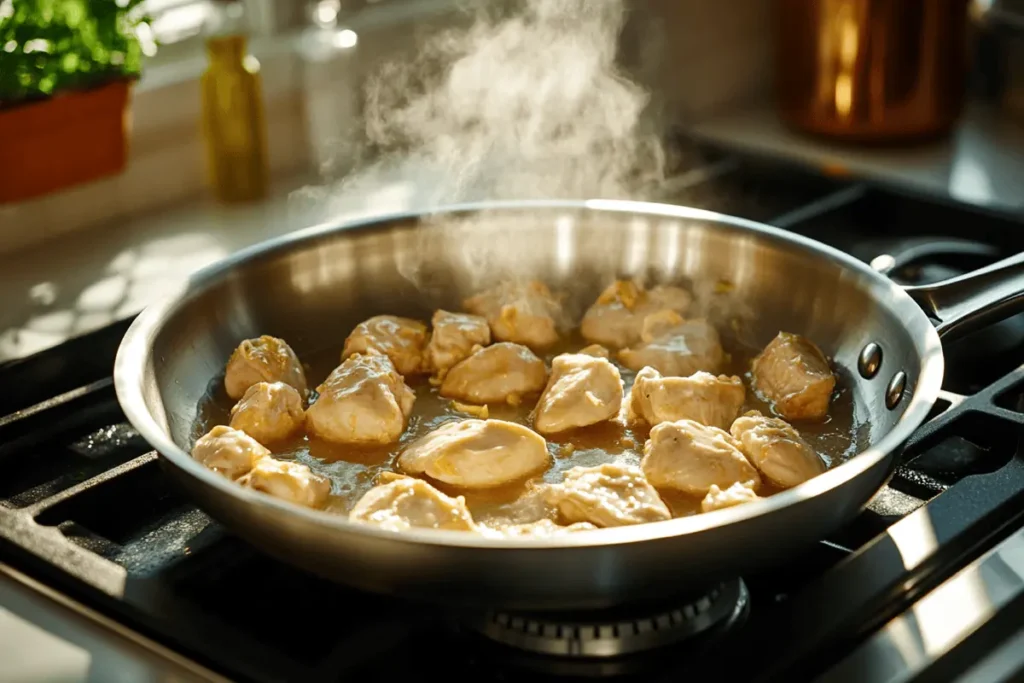When you crave something both comforting and refreshing, this chicken limone recipe deserves your attention. This dish blends juicy chicken with the tangy flavors of lemon, resulting in a meal that feels both lively and soothing. Moreover, the gentle citrus notes pair perfectly with herbs and delicate seasonings, making it ideal for weeknights or special gatherings.
Although this recipe does not require advanced techniques, it still produces restaurant-quality results. In fact, the key lies in selecting fresh ingredients and following a few simple steps. Above all, chicken limone allows you to transform everyday chicken into a memorable treat, perfect for impressing family or friends. As you learn these tips, you will find that limone with chicken can become a household favorite.
Table of contents
The Basics of a Chicken Limone Recipe
At its core, a chicken limone recipe highlights the simplicity of good ingredients. By starting with boneless, skinless chicken breasts, you ensure a tender, lean base. Then, fresh lemon juice, zest, and aromatic herbs bring brightness to the dish. Furthermore, a light sauce, often made with broth and a bit of butter, balances tart and savory notes. This combination results in a meal that feels both elegant and relaxed. Additionally, the minimal preparation time and basic pantry staples mean you can enjoy limone with chicken even on busy evenings. With each bite, you experience the harmony of citrus, tender chicken, and subtle seasonings.
Selecting the Right Chicken for Limone with Chicken
When choosing chicken for your limone recipe, opt for high-quality boneless, skinless breasts. These cook evenly and absorb flavors well. You can also pound them slightly thinner to ensure uniform thickness. This step shortens cooking time and promotes even browning. Alternatively, if you prefer darker, richer meat, use boneless thighs. They provide extra juiciness, although the flavor profile remains slightly different. Regardless of the cut, always choose fresh chicken, trim any excess fat, and pat it dry before seasoning. By starting with the best possible chicken, your chicken limone recipe will taste even better.
Citrus Selection and Flavor Balance
Although lemons star in this dish, do not limit yourself to only one dimension of citrus flavor. Lemon juice adds brightness, while lemon zest brings a fragrant, floral note that enhances each bite. You can also experiment with Meyer lemons for a sweeter, more complex taste. Furthermore, balancing lemon with a bit of butter or olive oil ensures the sauce remains smooth and not overly sharp. A small pinch of sugar or honey can mellow any harsh acidity, while fresh herbs like parsley or basil provide herbal depth. In the end, it is all about finding the perfect balance to create a sauce that complements, rather than overwhelms, the chicken.

Essential Tools and Techniques for a Perfect Chicken Limone Recipe
Cooking chicken limone does not demand specialized equipment, yet having a few essential tools on hand makes the process smoother. A heavy skillet, ideally nonstick or stainless steel, helps achieve even browning. A meat mallet or a sturdy rolling pin can assist in flattening chicken breasts. Moreover, a fine grater or microplane makes zesting lemons simple. Finally, a reliable instant-read thermometer ensures the chicken cooks to a safe internal temperature without drying out. With these basic tools, creating limone with chicken becomes more fun and less stressful.
Preparing the Chicken Breasts for Even Cooking
To ensure your chicken breasts cook evenly, place each breast between two sheets of plastic wrap and gently pound it with a mallet. Aim for about 1/2-inch thickness. Although this step may seem optional, it often leads to more consistent results. Thinner pieces brown quickly and cook through faster, reducing the risk of undercooking or overcooking. Also, season both sides of the chicken with salt and pepper before cooking. This simple step builds flavor from the start. By preparing the chicken breasts properly, you set the stage for a successful chicken limone recipe.
Creating the Sauce for Limone with Chicken
The sauce defines much of the dish’s character. Start by sautéing minced garlic and perhaps a shallot in a bit of butter or oil until fragrant. Then, add a splash of white wine or chicken broth to deglaze the pan, scraping up any browned bits from the chicken. Next, stir in fresh lemon juice, lemon zest, and a bit of butter to create a velvety texture. Taste and adjust seasoning, perhaps adding a sprinkle of salt or a hint of sugar. Finally, return the cooked chicken to the pan, turning it to coat in the sauce. By following these steps, you build a sauce that melds brightness, richness, and depth.
Dishing Up This Chicken Limone Recipe
Once your chicken and sauce reach perfection, serving the meal becomes easy. Plate each chicken breast and spoon the sauce on top, ensuring no drop goes to waste. Garnish with extra lemon slices or chopped herbs for a pop of color. Although this dish stands on its own, consider adding complementary sides to round out the meal. A side of sautéed spinach, roasted asparagus, or a simple green salad pairs beautifully. Also, serving chicken limone over a bed of pasta or fluffy rice absorbs the sauce and turns it into a comforting, complete dinner. With so many serving options, you can customize limone with chicken to your personal taste.

Pairing Chicken Limone with Wine and Beverages
Because chicken limone leans toward bright, citrusy flavors, choose a wine that complements rather than clashes. A crisp, dry white wine, such as Pinot Grigio or Sauvignon Blanc, usually works well. The acidity in these wines echoes the lemony sauce without overpowering it. If you prefer non-alcoholic drinks, try sparkling water with a twist of lemon or a light herbal iced tea. The goal is to select a beverage that refreshes the palate, enhances the meal’s brightness, and keeps the dining experience balanced.
Variations and Adaptations of Limone with Chicken
While the classic chicken limone recipe tastes wonderful as is, feel free to explore variations to keep the dish exciting. For instance, you can add capers for a briny kick, creating a flavor reminiscent of chicken piccata. Alternatively, stir in a spoonful of Dijon mustard for a subtle tangy depth. Some might enjoy a creamy twist by adding a splash of half-and-half or mascarpone cheese. Even a handful of cherry tomatoes or baby spinach leaves introduced at the end can add color and complexity. Moreover, adjusting the lemon intensity lets you tailor the dish to your preference. Add more zest for a bolder citrus presence, or use less if you prefer milder flavors.
Experimenting with Different Herbs and Spices
Just as lemon brightens the dish, so do fresh herbs and spices. Parsley remains a popular choice, offering a clean, peppery note. Basil introduces a hint of sweetness that pairs nicely with lemon. If you crave a slightly warmer flavor, consider thyme or oregano. For more adventurous palates, a pinch of red chili flakes brings gentle heat. Remember that balance matters, and start with small amounts. By experimenting, you transform limone with chicken into a dish that reflects your culinary style.

Healthy Tips for a Lighter Chicken Limone Recipe
This chicken limone recipe, by nature, can fit into a balanced diet. Lean chicken provides protein, while the sauce’s bright flavors help you rely less on heavy fats. Still, you can make small changes to lighten it further. Choose olive oil instead of butter, or use a smaller amount of butter to reduce saturated fat. Consider low-sodium chicken broth to control salt levels. If you want a creamy element, add a spoonful of Greek yogurt instead of cream. These tweaks maintain the dish’s essence while supporting a health-conscious lifestyle.
Reducing Sodium and Adding More Vegetables
If you watch your sodium intake, season lightly at the start and taste before adding more salt. Fresh lemons, herbs, and spices can deliver flavor without relying heavily on salt. Additionally, serving the dish with a side of roasted vegetables or a vibrant salad helps increase fiber, vitamins, and minerals. Vegetables like broccoli, zucchini, or cherry tomatoes complement the tangy sauce and keep the meal balanced. By focusing on produce and lean protein, you create a nutritious dinner that still satisfies your desire for rich flavor.
Storing and Reheating Leftovers
If you have leftover chicken limone, store it in an airtight container in the fridge for up to three days. When reheating, do so gently to preserve moisture. Warm it in a pan over low heat, adding a splash of broth or water if the sauce thickened too much. Avoid microwaving on high power, as it can dry out the chicken. Instead, use low-medium power and stir occasionally. Leftovers can taste nearly as good as the first serving, especially if you treat them with care. Consider repurposing them in a sandwich or slicing the chicken over a fresh salad for a quick lunch.
Freezing and Meal Prep Considerations
Because fresh lemon flavor degrades when frozen, it’s best to enjoy chicken limone fresh. However, if you must freeze leftovers, do so in a sealed container for up to one month. Thaw overnight in the fridge and reheat gently. Keep in mind that the sauce’s texture might change slightly after freezing. If you plan ahead, you can marinate the chicken and store it raw in the freezer, then thaw and cook with fresh lemon juice. This approach retains more of the dish’s original brightness. For meal prep, consider making extra sauce and storing it separately, so you can add fresh lemon at the last moment.
Conclusion
In the world of chicken dishes, a chicken limone recipe stands out for its unique blend of bright citrus, tender meat, and easy preparation. Moreover, it adapts well to personal tastes, whether you prefer bold flavors or subtle nuances. By experimenting with herbs, adjusting lemon intensity, and pairing with various sides, you can make limone with chicken a signature part of your culinary repertoire. Over time, you may find that this simple yet memorable dish represents the perfect balance of zest and comfort. As you refine your technique and explore variations, chicken limone can become a go-to meal that pleases everyone at the table.
Frequently Asked Questions
What is lemon chicken sauce made of?
Typically, lemon chicken sauce involves a blend of fresh lemon juice, lemon zest, chicken broth, and a bit of butter or oil for richness. Some recipes add garlic, shallots, or herbs to deepen the flavor. The goal is a bright, balanced sauce that complements the chicken rather than overpowering it.
What does putting lemon on chicken do?
Adding lemon to chicken helps tenderize the meat and infuse it with a fresh, tangy flavor. Lemon’s acidity can break down some proteins in the chicken, resulting in a more tender texture. It also brightens the overall taste, making the dish feel lighter and more vibrant.
What does lemon and vinegar do to raw chicken?
Lemon and vinegar both provide acidic environments that can help tenderize chicken. However, too much acid for too long can cause the texture to become mushy. Using these ingredients in moderation allows you to enjoy a more succulent and flavorful chicken dish without affecting the texture negatively.
What is chicken piccata made of?
Chicken piccata features thinly pounded chicken breasts, dredged in flour, and cooked in a sauce of lemon juice, capers, butter, and white wine or broth. Although similar to chicken limone, piccata typically includes capers and a slightly sharper, briny flavor profile.

